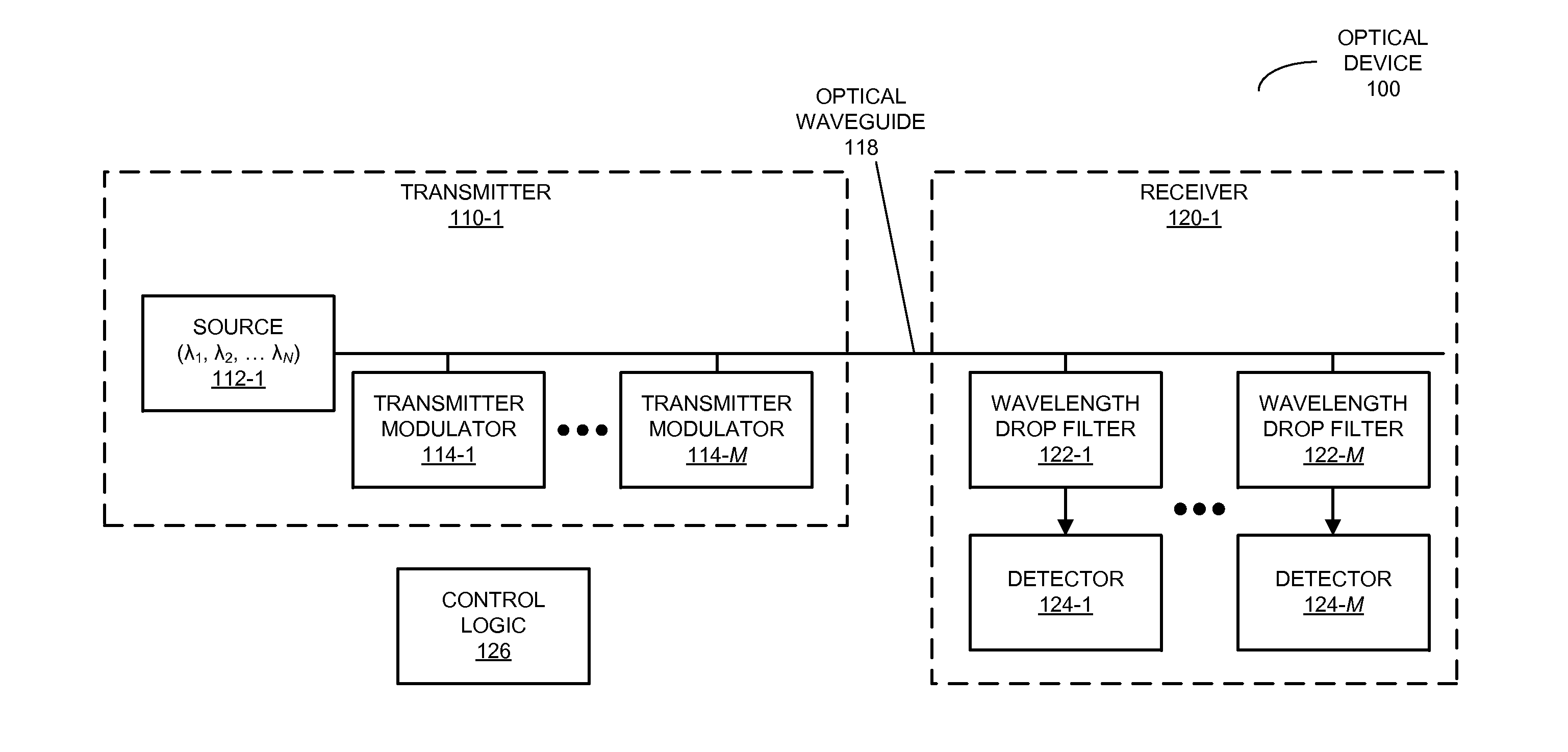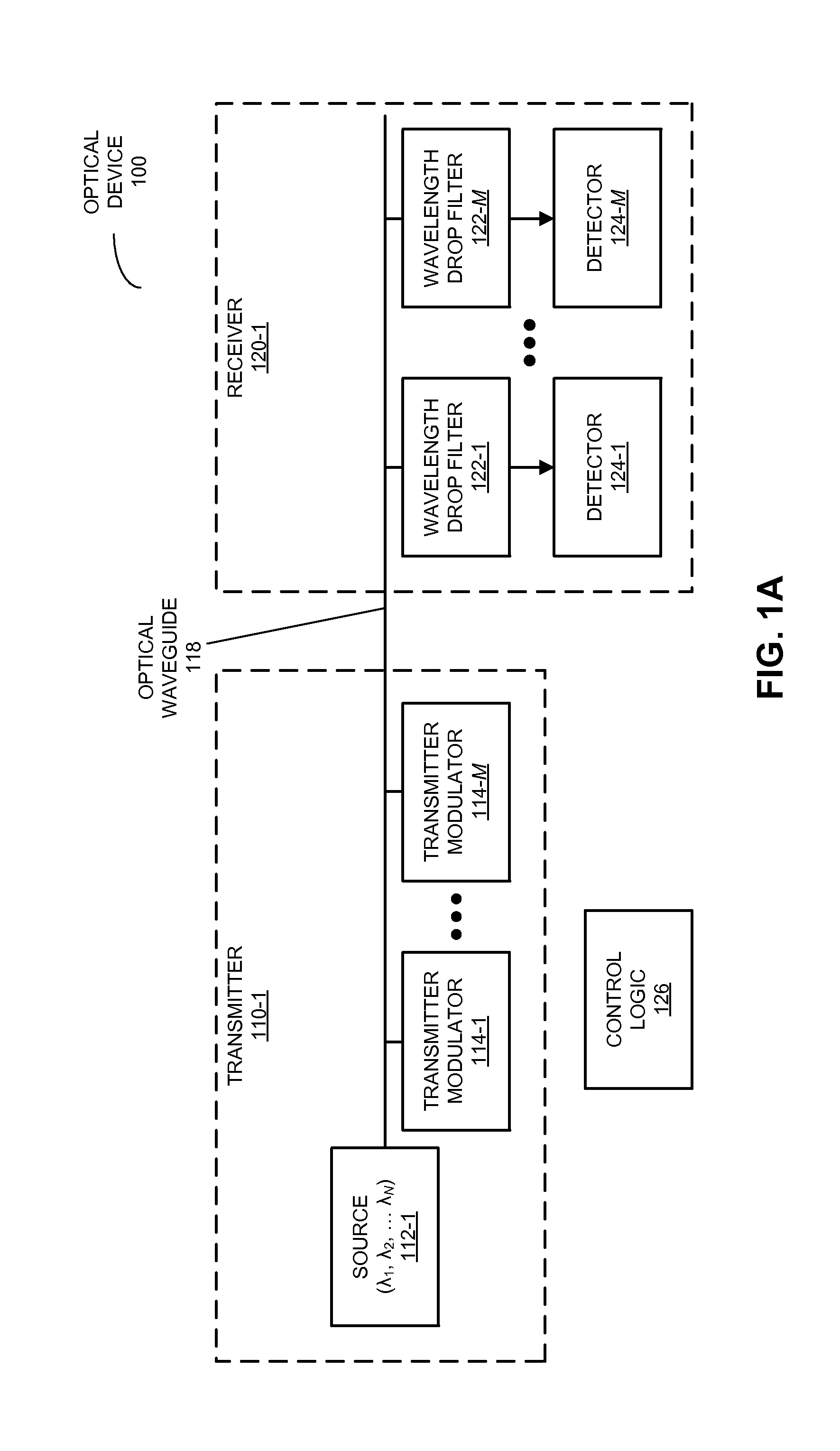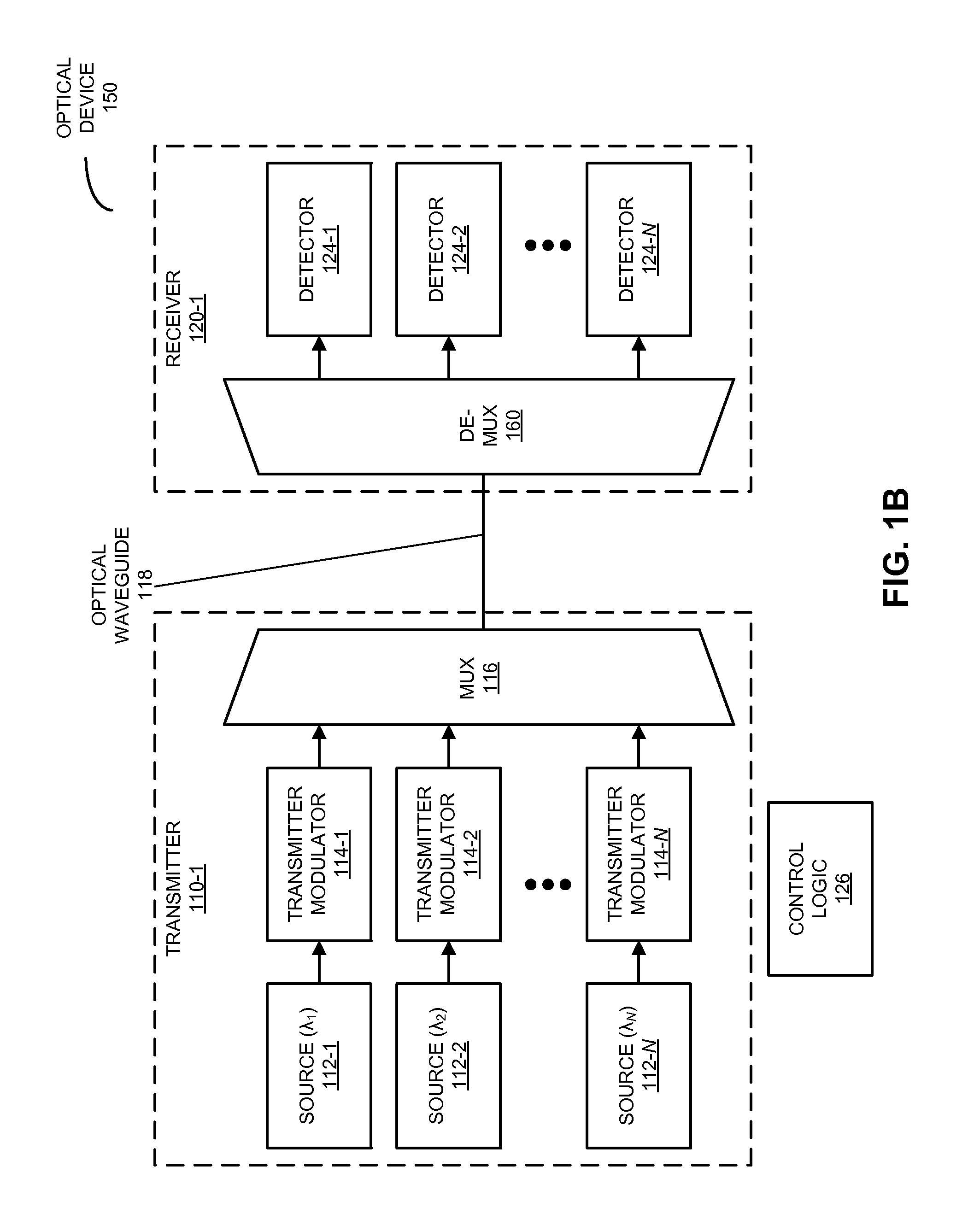Optical device with reduced thermal tuning energy
a technology of thermal tuning energy and optical device, applied in the field of optical device, can solve the problems of degrading the quality factor of optical resonators, introducing additional optical losses, and associated with silicon-based optical devices, and achieve the effect of reducing the average tuning energy associated
- Summary
- Abstract
- Description
- Claims
- Application Information
AI Technical Summary
Benefits of technology
Problems solved by technology
Method used
Image
Examples
Embodiment Construction
[0032]Embodiments of an optical device, a computer system that includes the optical device, and a method for configuring the optical device are described. This optical device includes multiple optical modulators having target operating wavelengths that are distributed over a band of wavelengths and actual operating wavelengths. For example, the target operating wavelengths of adjacent optical modulators may be separated by a wavelength increment. Moreover, because of differences between the actual operating wavelengths and the target operating wavelengths of the optical modulators, tuning elements may be used to tune the optical modulators so that the actual operating wavelengths match corresponding carrier wavelengths in a set of optical signals. Furthermore, control logic in the optical device may assign the optical modulators to the corresponding carrier wavelengths based at least on differences between the carrier wavelengths and the actual operating wavelengths. Using this conf...
PUM
 Login to View More
Login to View More Abstract
Description
Claims
Application Information
 Login to View More
Login to View More - R&D
- Intellectual Property
- Life Sciences
- Materials
- Tech Scout
- Unparalleled Data Quality
- Higher Quality Content
- 60% Fewer Hallucinations
Browse by: Latest US Patents, China's latest patents, Technical Efficacy Thesaurus, Application Domain, Technology Topic, Popular Technical Reports.
© 2025 PatSnap. All rights reserved.Legal|Privacy policy|Modern Slavery Act Transparency Statement|Sitemap|About US| Contact US: help@patsnap.com



